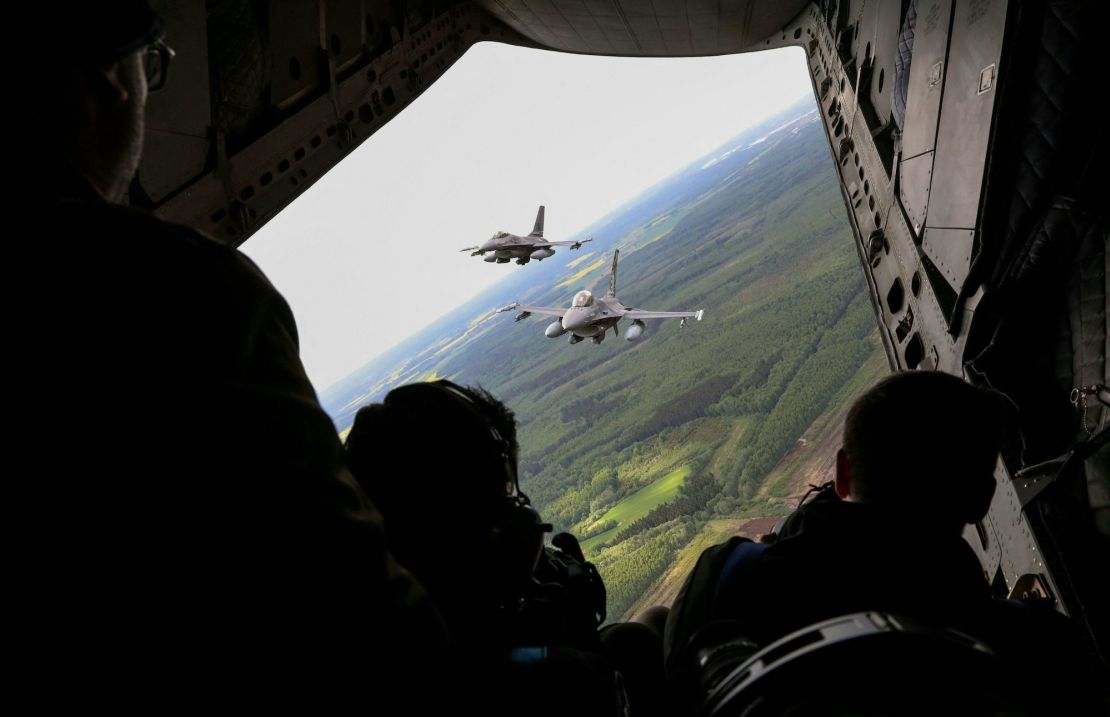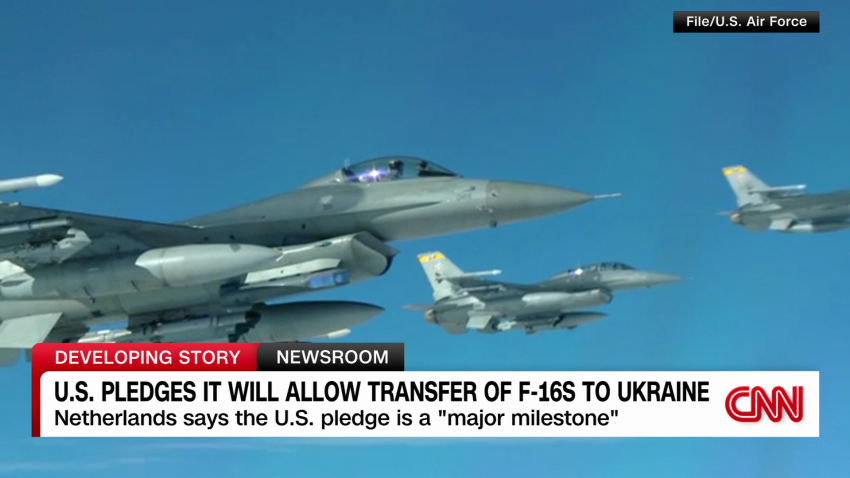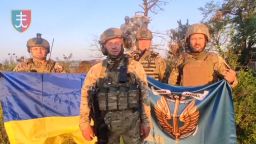The depth and frequency of craters across the frontline city of Orikhiv are a blunt example of why Ukraine needs F-16 fighter jets urgently.
Ukrainian troops amassed around the city have the unenviable task of pushing through minefields towards an enemy that has long anticipated their advance.
But their biggest handicap is the one they rarely hear until it is too late. Russian jets fire half-metric-ton bombs that glide in from afar – from outside of the reach of Ukraine’s air defenses – and then devastate Ukrainian positions at will. Sometimes as many as 20 in as many minutes are launched into Orikhiv.
Ukrainian radar systems provide some warning, coupled with the brief and ominous roar of an incoming missile. But the eventual target is often obliterated without notice.
So when Ukraine says it urgently needs F-16s, it is because Ukrainian troops are dying daily because of Russian air superiority. Despite Western promises, even the training is yet to begin. On Friday, Ukraine welcomed the news that the US approved the transfer of F-16s when training is complete. But it remains the case that Ukraine is unlikely to receive jets until next year.
Armchair critics of the slow pace of Ukraine’s counteroffensive seem to have conjured a superhuman Ukraine, capable of overturning any basic military precepts, based on the collapse of Russian positions in Kyiv’s lightning advances on Kharkiv and Kherson last year. They now expect an army that was almost written off 18 months ago, to now be able to achieve a feat no NATO army would even attempt.

NATO armies would not consider tackling the minefields and defenses along the southern Zaporizhzhia front without high-end armor, anti-demining equipment, air superiority and a well-trained force. But somehow the West has afforded itself the luxury of impatience with Ukraine not being able to take an army of often-mobilized young men, rush-trained on new equipment, and overrun Russian-held territory by fall.
‘It is very scary’
Ukrainian troops know all too well the impact F-16s could have on Russian forces and the fight, as they are suffering the same from Russian jets now.
One Ukrainian marine in the southern front told CNN: “I perfectly understand what aviation is with its equipment and firepower. It is very scary.” He said the Russians would feel the same effects they have from F-16s. “It will make things a lot easier as they won’t feel safe in their rear positions. Not everyone will be psychologically ready to go back to the trenches after an airstrike.”
In Ukraine’s harried cities, where air raid sirens are so constant locals barely deviate on their path when they sound, F-16s would permit some of the Russian jets that fire missiles from a distance to be intercepted or challenged. It would disrupt the given of terror that Moscow inflicts on civilian areas every night. When you are lying in Dnipro, hearing the sirens and waiting for the blasts, any debate on whether Ukraine needs more air defenses feels ridiculous.

The task of getting high-end jets to Ukraine at pace was always ambitious.
The supply of F-16s, with the intense amount of training and servicing they require, would always have brought NATO to the closest it has been yet to being a combatant. The jets need Ukrainians to become masters in their upkeep overnight, and there was always a risk NATO personnel would be called upon to fill in the gaps, or help repair the planes inside NATO territory. And so the pace has slowed.
Whether there are enough suitable Ukrainians to be trained, or whatever the other bureaucratic hurdles, the will is clearly not there yet among NATO states to make it happen. They have learned they can do things fast if they want to – they did so with the Leopard tanks.
The calculation may have been made that the risk for NATO being dragged into the war is too high to justify moving faster with F-16s. That it is easier to instead gamble on whether Ukraine can succeed in its counteroffensive, with one hand tied behind it back.
In the basements of Orikhiv, where Ukrainians troops sit and wait to learn whether the incoming missiles jets will strike near them, it is a gamble that seems callous and detached.


